Recent Comments
No comments to show.
Posted by admin in Babies 0-6 months, Explore Sydney, Pregnancy, Safety, Travelling with kids on March 15th, 2015
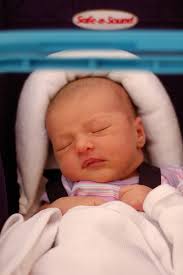
Considering the wide range of baby capsules and carseats available for sale or hire can make it difficult to choose – do you go for a baby capsule or is a carseat a better option?
Although convertible carseats are just as safe as a baby capsule and you get more use out of them we’d suggest that a baby capsule has many benefits over a carseat that are worth considering before you make your final decision. Many parents find baby capsules a practical and easy alternative for the safe transport of their baby for the first 6 months or so.
We see many parents who come in and have a baby seat already installed in their car but have found that taking their baby in and out of the seat when they arrive at their destination often disturbs the baby’s sleep and unsettles them. Having a baby capsule means you can take your sleeping baby straight from the car without having to wake them to move them to the pram.
Of course, the most important reason to choose a baby capsule is to ensure the safety of your baby when travelling in the car. Baby capsules are suitable from newborn until six or twelve months depending on the product and the capsule you choose. They are engineered to cocoon your baby with their high side walls, ensuring your child is secured safely within the capsule using a five point harness that is easy to adjust.
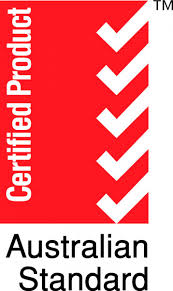
All our capsules for hire carry the Australia and New Zealand Standards AS/NZS 1754 sticker so you can feel confident the capsule meets Australia and New Zealand standards. Likewise, it is also important to make sure your capsule is properly fitted to your vehicle to maximise the safety benefits and minimise the risk of serious injury or death in the event of an accident. That’s why we offer free professional installation with all of our hire baby capsules.
Another major benefit of hiring your baby capsule is the ability to move the capsule in and out of the car while the baby is safely tucked inside. A base is installed into your car that the capsule clicks into, so you can quickly and easily move a sleeping child in and out of the car without disturbing the baby or playing around with straps. Baby capsules are generally quite light and fitted with a handle for easy manoeuvring. You can also hire pram adaptors so that you can drop your hire baby capsule straight onto your pram with just one click giving you a great deal of flexibility and freedom.
This freedom to effortlessly move a sleeping baby is particularly precious in these first months together with your baby. So, here at Rock-A-Bye Baby Hire we have a range of compatible prams and adaptors for hire that our capsules for hire can click into, allowing you to move your sleeping baby from car to pram and back again without disturbing their sleep.
Click here for our baby capsules for hire in Sydney range.
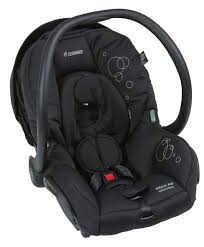
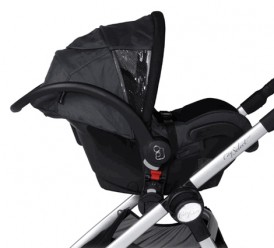
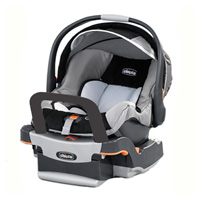
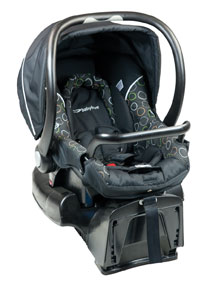
Click here to view our prams for hire in Sydney.
Our travel system (capsule and pram hire) range is here.
Posted by admin in Babies 0-6 months, Explore Sydney, General, Safety on July 8th, 2014
When you’re newly pregnant and considering setting up your nursery, its natural to want to have the best of everything for your baby. But these days, with $2,000+ prams and $1,500 beds, purchasing all this brand new just doesn’t make sense. This is where we step in, enabling families to hire rather than buy their nursery equipment. Our motto is “Why buy when you can hire?” but what does that really mean? What are the average savings on hiring –v- buying? We’ve prepared a comparison table that contrasts the cost of hiring your nursery equipment –v- paying RRP, keeping in mind that these are all items that are only required for a limited period in your nursery.
*All hire costs are based on a 6 month hire except the breastpump in this table which we’ve estimated will be hired for 4 weeks.
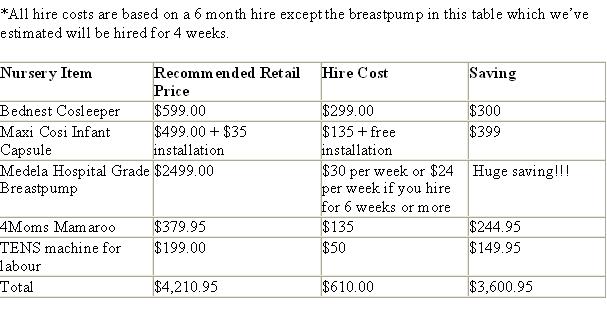

All up, a couple who choose to hire just these few nursery items that are really only required for such a limited amount of time in your baby’s early days could save themselves over 80% of the retail cost of the very same items. Its quite a big saving and something to think about when doing your budgeting.
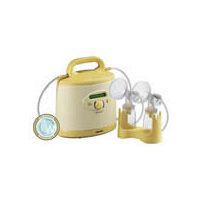
Hiring is also a good way to try products you’re not sure about, before you buy and are then stuck with them sitting collecting dust in the garage or waiting for the day you can get the camera out, take the pictures, then list it all on Ebay and hope you can recoup at least a bit of the outlay.
All of our baby equipment for hire is purchased brand new direct from the manufacturer or importer, every piece is carefully cleaned and safety checked before each hire and is regularly replaced to maintain our exacting standards. You’re not going to lose out on quality just because you hire – we have a large range of premium, luxury baby products from brands such as Leander, Bugaboo, Seed Organics, Baby Jogger, Maxi Cosi, 4Moms and many more.
Every member of our staff is a qualified and accredited Infant Restraint Fitter and we offer complimentary fitting of all hired infant restraints so that you can rest assured that your baby’s safety is our priority. All hire baby capsules come with free professional installation.
Hiring baby equipment is also great for holidays, whether for yourself or for relatives or friends who are coming to visit. It can greatly reduce stress, save you those exorbitant excess baggage fees (without even mentioning the potential for serious damage to your baby equipment when its in transit). Using our Sydney Airport Concierge Service means you can have everything ready and waiting in your hire car by the time you arrive.

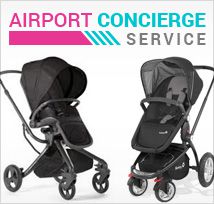
Call us today on 9589 4942 for a quote on your nursery needs – we can create a discounted package deal to suit any family or email through your wish list to Danni at jess@rockabyebabyhire.com.au.
Posted by admin in Babies 0-6 months, Breastfeeding, General on June 19th, 2014
Yep you read it right. The winner of this comp will pay just $1 for a Mimijumi Very Hungry baby bottle.
Mothers, Nurses, Doctors, Lactation Experts and Industrial Designers have come together to create the perfect feeding bottle.
With natural colours, textures and forms, the Mimijumi Very Hungry feeding bottle provides the perfect complement to breastfeeding and the best possible transition to bottle feeding. The innovative nipple design on the Mimijumi Very Hungry feeding bottle replicates a mother’s breast, creating the most natural feeding and latching experience for a happier and healthier bottle fed baby. Functioning like a breast, the non-free-flow nipple design means your baby has to actually latch onto the nipple and suck in order to produce the milk. These elements combined replicates breastfeeding and provides the most natural bottle feeding experience possible.
The Very Hungry feeding bottle is easy to open and clean, and is top rack dishwasher safe. Our unique integrated venting system means it is anti-colic and anti gas, and our bottles have a skid-free base for those hard one-handed refills. The Very Hungry mimijumi feeding bottle and parts are produced in Austria with the highest quality standards to protect your baby, and all bottles are BPA Free, Latex Free, EA Free, totally toxin free and exceed all Australian safety standards. The Very Hungry feeding bottle is the Next Breast Thing.
All bottles come standard with a Flow Rate 1 Nipple.
Comment on our post telling us in 20 words or less why you’d like to win the Mimijumi Very Hungry Baby Bottle and like our page on Facebook and you’re done.
Winner will be chosen at random and notified via our Blog and Facebook Page.
https://www.facebook.com/Rockabyebabyequipmenthire
a Rafflecopter giveaway
Posted by admin in Babies 0-6 months, Babies 6 months - 4 years, Breastfeeding, General, How to on May 15th, 2014
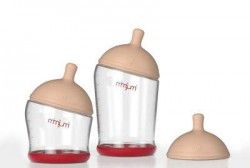
We’re really excited to have been accepted as a stockist of the MIMIJUMI BABY BOTTLES.
Developed by a comprehensive team of Mothers, Nurses, Doctors, Lactation Experts and Industrial Designers finally its here – the perfect baby bottle. With natural colours, textures and forms, Mimijumi baby bottles provide the perfect complement to breastfeeding and the best possible transition to bottle feeding. The innovative nipple design on Mimijumi baby bottles replicate a mother’s breast all the way down to pores on the skin, creating the most natural feeding and latching experience for a happier and healthier bottle fed baby.Functioning like a breast, the non-free-flow nipple design means your baby has to actually latch onto the nipple and suckle in order to produce the milk, just like they do at the breast. These elements combined replicate the breastfeeding experience and provide the most natural bottle feeding experience possible.
Mimijumi baby bottles are easy to open and clean, and are top rack dishwasher safe. Our unique integrated venting system means it is anti-colic and anti gas, and our bottles have a skid-free base for those hard one-handed refills. All Mimijumi baby bottles and parts are produced in Austria with the highest quality standards to protect your baby, and all bottles and parts are BPA Free, Latex Free, EA Free, totally toxin free and exceed all Australian safety standards. Coming in 2 sizes, The Very Hungry Baby Bottle and Not So Hungry Baby Bottle, Mimijumi baby bottles are the Next Breast Thing.
Posted by admin in Babies 0-6 months, Babies 6 months - 4 years, How to, Safety on March 19th, 2014
All child restraints in Australia that comply with the Australian Standard require the restraint to be fixed to the vehicle at two separate points – using the car seatbelt and a top tether which anchors to to a child restraint anchor point in the vehicle. You can install a car seat yourself, however research shows that a large proportion of restraints are incorrectly fitted, putting children at risk of serious injury and death.
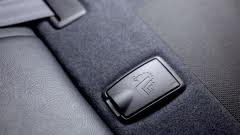
A 2009 Monash study of almost 2000 car journeys involving children in restraint seats found that children had been incorrectly restrained up to 88 per cent of the time, depending on the restraint type; 88 per cent of forward-facing seats were wrongly installed, followed by infant seats (67 per cent) and booster seats (63 per cent).
The quick answer is No. It really depends on when your car was manufactured as to whether or not your vehicle has an anchor fitting point.
Sometimes its very easy to find an anchor point as they will have the bolt already in place and many modern vehicles have a cover over the point with this symbol identifying it as such.
Where there is no anchor bolt present there will sometimes be just a threaded hole that needs to have the anchor bolt and fitting installed. They can be located in a variety of places and could be hidden by a plug or cover. Anchor points could be located in the parcel shelf, in the back of the rear seat, in the boot floor or even in the roof behind the rear seat. If in doubt check the location of the anchor points in the vehicle’s handbook.
The anchor bolts used for child restraints are of a particular size and incorporate a thread that will not be used anywhere else in the area of the anchor points. If the anchor bolt easily screws into the point you have located, it will be the anchor point.
You will need: An anchor kit which includes the anchor bolt, washer, spacers, and anchor bracket that will be used to anchor the child restraint to the vehicle.
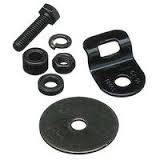
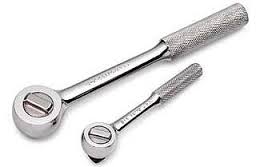
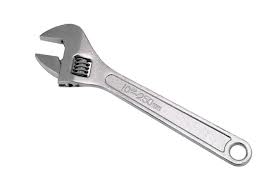
All the staff employed by Rockabye Baby Equipment Hire are accredited restraint fitters and we offer a professional restraint fitting service – just click here to make your booking or call us direct on 02 95994942 and we can discuss your requirements.
Posted by admin in Babies 0-6 months, General on March 3rd, 2014
Ah, Easter. The eggs seem to hit the shelves earlier every year! In the blink of an eye, we’ll be eating fruity buns for brekkie and chocolate before lunch. At no other time in the year are either of these acceptable dietary choices!
If you’re lucky, you might even be having family to stay. And isn’t it wonderful when that family includes a lovely-jubbly baby to coo over? But little ones come with needs and maybe your home isn’t set up for it. Don’t panic! And don’t buy it all! Not when you can hire at a skerrick of the price. Best of all, when your guests leave, collection is just a phone call away, meaning you don’t have to worry about finding somewhere to store it all – which is more than can be said for those extra Easter kgs! Here’s a list of handy things to have ready for visitors with a 0-6-month bundle of joy in tow:
First and foremost, baby has to sleep somewhere! The Sleepi is one of the most beautiful bedding options available for newborns and babies. It’s easy to set up, the base can be adjusted to avoid sore-baby-picking-up-back and is a luxurious option to provide for your smallest guest.
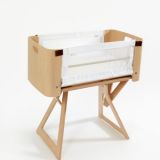
This amazing bassinette is perfect for co-sleeping. It attaches to any bed so bubs can be tended to, quickly and easily. The mesh sides can be positioned up fully, half-folded or fully down to suit the situation. The Bednest can also be used in baby’s own room with both sides up. The stand is included and has over 70 settings, including the ability to tilt to assist babies with reflux.
When it comes to tiny babies and sleep, the best solution is the one that works for you, and hammocks are increasingly popular for their safety and natural sleep encouraging factors. At only 3kg, the Miyo Baby Hammock is one of the most compact and lightweight hammocks available.
You really don’t want to end up changing nappies on a bed or the floor unless there’s no alternative. The super-fast set up and easy-clean surface make this a great change table for home or holidays.
New legislation requires all children under seven years of age to be restrained in an appropriate child restraint while travelling in a car. Rock-A-Bye-Baby has a wide range of capsules and car seats from which to choose. They’ll even install them properly, so you can be sure your guests’ baby is safe and sound, and ready to do some serious sight-seeing. The Maxi Cosi Mico infant capsule is suitable from birth to 9kgs.
This is the Rolls-Royce of prams and a great product for parents with a penchant for gadgets. So, what’s it all about? The Origami is the world’s first power-folding pram (the pram folds itself at the touch of a button). It’s also the world’s first iPod-playing, mobile phone-charging, LCD-sporting pram. With a generator in the rear wheels that charges the pram as you walk, the Origami can power speakers, a phone charger, a speedometer, daytime running lights and sensors that detect when a child’s in the seat (so it’ll never fold by accident).
Posted by admin in Babies 0-6 months, Babies 6 months - 4 years, How to on February 21st, 2014
Ah the joys of watching your baby master new skills. I remember very well how excited I was to introduce solids to my little girl and watching her eat a mix of raw avocado and greek yoghurt pleased me no end. She still doesn’t believe me that she really did love to eat those two together.
Without stating the obvious, babies learning to eat is a very messy business. We always had a bunch of $2 shop shower curtains when my little one was small that I threw down under the highchair to save having to wash the floor after every meal where what seemed like 50% of the food would end up flung on the floor.
Some highchairs like our Stokke Tripp Trapps are very easy to clean, others have a nice puffy cushiony cover which can have tiny little folds and corners and hidey-holes where food hides and is very hard to get out. You’ll be using your highchair for quite a bit of time so cleaning it is a job everyone is faced with at some point. Here’s our guide on how to clean your highchair – hope it helps.
NOTE: Doing this outside in your yard or a space where water splashing on the floor doesn’t matter is a good idea.
Posted by admin in Babies 0-6 months, Babies 6 months - 4 years, General, Safety on February 19th, 2014
By law, babies can legally face forward in the car from 6 months of age and baby capsules are generally used to 6 months of age, so many parents presume that baby can go straight to a forward facing carseat once they turn 6 months old. But is this really the safest option?
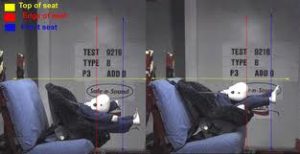
Safe N Sound crash testing
According to Kidsafe Australia, more children die from injuries sustained by or in motor vehicles than from cancer and diseases of the nervous system combined.
Many parents turn their babies forward-facing at 6 months because the law says they can, unaware that this could put their baby at risk of serious neck, head and internal injuries in a collision. In a front-on collision, your baby’s head will snap forward abruptly which can cause considerable, sometimes permanent damage to their spine. It is not just a matter of head strength. Just because your baby holds their head up well doesn’t mean they are strong enough not to suffer this kind of injury.
Babies aren’t small adults and they’re not built the same way as an adult so the risk of serious injury in a car crash when they are forward facing is very real. Babies have surprisingly heavy heads in relation to their bodies: the average nine month old child’s head makes up 25% of his body weight, while an adult’s head only makes up 6% of its body weight. In a forward facing accident the body is restrained by the inbuilt harness, but your baby’s head is not so the force of the accident will snap their head and neck forward quite sharply, even in a minor accident.
To see the difference in an accident between rear and forward facing you might like to watch this video:
Rear -v- forward facing video
We suggest to our customers that they guided by the baby’s weight rather than his or her age. If your child is six months old but only weighs 8.5kg, he or she can and should stay in their rear-facing restraint until she weighs enough to move to the next stage seat. There are many affordable products on the market today that will allow the average child to rear face beyond 6 months old.
When considering whether to move your baby to a forward facing restraint, it’s important to consider safety but also the needs of your family. Some parents report that their babies are very unhappy in the rear-facing position and this does need to be taken into account if its so distracting you can’t drive!
Posted by admin in Babies 0-6 months, General, How to, Safety on February 16th, 2014
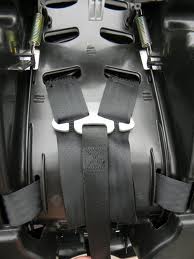
This is one of those jobs we’ve become very good at. No matter how well you put baby’s nappy on, no matter how certain you are that the bib will catch everything, somehow, baby capsules get really messy over time and need a good clean.
Thankfully a part of the Australian Standard for baby capsules specifies that the covers on the capsule must be easily removed for cleaning. “Easily removed” is a broad term in our experience and some covers are much easier than others to get off. Most times you’ll find some helpful cleaning advice in the instruction manual that comes with your capsule or carseat.
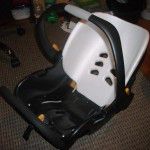
The shell of your restraint can be cleaned while its “in the nude” – we suggest you use a mild solution of disinfectant and warm water and wipe the body and handles down and then dry with a clean towel.